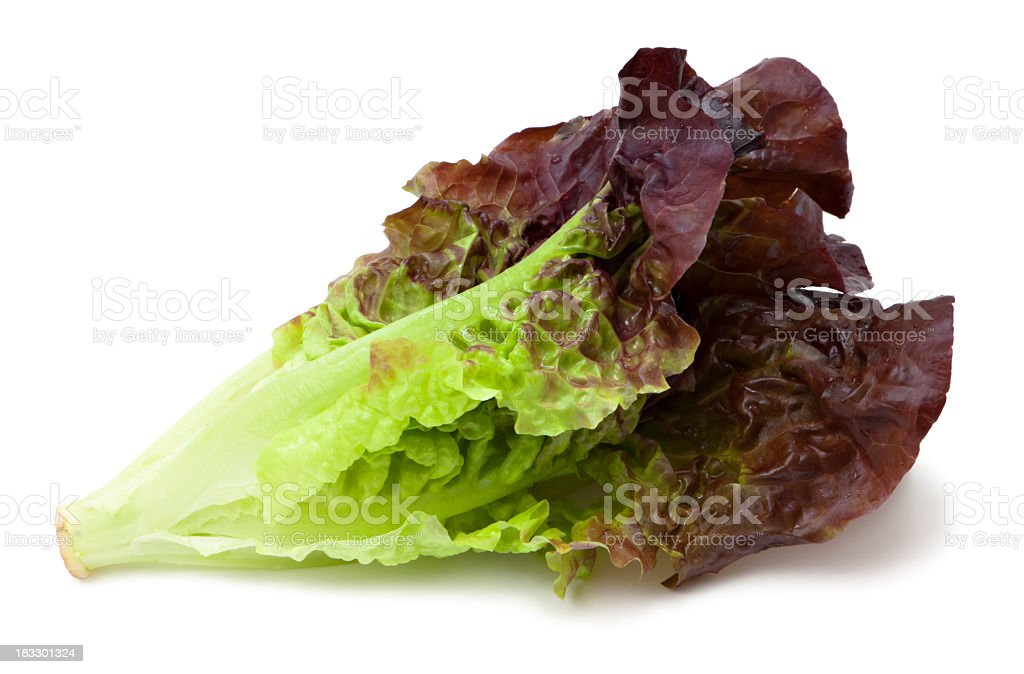Red leaf lettuce (Lactuca sativa) is a leafy vegetable in the daisy family.
It resembles romaine lettuce except in its tips, which have a red or purple tinge.
Aside from adding a burst of color to your favorite salad or sandwich, this vegetable offers numerous benefits.
Here are 9 health and nutrition benefits of red leaf lettuce.
- High in nutrients but low in calories
Red leaf lettuce is nutrient-dense, meaning that it’s high in a variety of essential vitamins and minerals, yet very low in calories.
Its nutrition profile is similar to other popular leafy vegetables, such as green leaf, romaine, and iceberg lettuce, although there are a few notable differences.
For example, when compared to romaine, red leaf lettuce provides more vitamin K, slightly more iron, and slightly fewer calories — while romaine offers more fiber and vitamins A and C.
- Very hydrating
Maintaining adequate hydration is important for your overall health.
While drinking water plays a significant role in keeping your body hydrated, eating water-rich foods, such as red leaf lettuce, can also help.
Red leaf lettuce is 96% water, making it incredibly thirst-quenching.
Its high water content may also help curb hunger and promote fullness.
- Loaded with powerful antioxidants
Red leaf lettuce boasts a number of antioxidants, which protect your body from damage caused by unstable molecules called free radicals. Having too many free radicals in your body may increase your likelihood of certain diseases.
Red leaf lettuce is especially rich in the antioxidant beta carotene, which is a carotenoid pigment that your body converts into vitamin A (8, 9).
Eating adequate amounts of beta carotene may bolster your eyesight and reduce your risk of macular degeneration, a condition that can lead to vision loss.
What’s more, red leaf lettuce gets its reddish-purple hues from anthocyanins, a group of flavonoid antioxidants.
Diets rich in anthocyanin-dense foods may fight inflammation and are linked to improvements in heart disease risk factors, such as HDL (good) and LDL (bad) cholesterol.
Additionally, red leaf lettuce is a good source of vitamin C, another powerful antioxidant. Foods high in this vitamin may reduce your risk of heart disease and certain cancers.
- May keep your heart healthy
Generally speaking, a diet rich in fruits and vegetables may reduce your risk of heart disease.
While no study has directly tested the effects of red leaf lettuce on heart health, this veggie does have several heart-promoting properties.
For instance, red leaf lettuce provides 3% of the DV for magnesium and 5% for potassium in just 3 cups (85 grams) of shredded leaves — enough for one mid-sized salad.
Potassium and magnesium maintain a healthy heartbeat and allow your heart’s muscle cells to relax.
Additionally, deficiencies in both minerals have been linked to numerous heart-related disorders, such as high blood pressure, heart failure, and coronary heart disease.
- Excellent source of vitamin A
Vitamin A is the generic name for a group of fat-soluble compounds involved in maintaining immune health, cell growth, and eye health and vision.
This vitamin is also central to the normal development and function of many vital organs, including your heart, kidneys, and lungs.
Red leaf lettuce is chock-full of vitamin A, providing 127% of the RDI in just 3 cups (85 grams) of shredded leaves.
Adding just one or two servings of red leaf lettuce to your diet a few times per week can help you meet your needs for this vitamin.
- Packed with vitamin K
Red leaf lettuce is an excellent source of vitamin K, providing 149% of the DV in 3 cups (85 grams) of chopped leaves.
Vitamin K is crucial for blood clotting. Without it, you would increase your risk of uncontrolled bleeding.
In addition, this vitamin is important for bone growth and development. Adequate intake may protect against osteoporosis and fractures.
Although individuals taking certain blood-thinning medications may need to regulate their vitamin K intake, most people can boost their intake without any worry.
- May help lower blood pressure
Many people around the world have high blood pressure, which causes your heart to work harder and may increase your risk of heart disease or stroke.
Recent studies indicate that a diet rich in potassium may help lower blood pressure.
Potassium, which is found in adequate amounts in red leaf lettuce, appears to lower blood pressure by lessening the effects of sodium and helping dilate your blood vessels.
Increasing your red leaf lettuce intake in conjunction with other potassium-rich foods, such as avocados and beans, may help keep your blood pressure within a healthy range.
- May promote weight loss
Many traits of red leaf lettuce make it a weight-loss-friendly food.
For instance, this vegetable is extremely low in calories but fairly high in fiber, which can keep you feeling full.
Additionally, it has a high water content. Studies show that diets rich in low-calorie, high-water foods, such as leafy vegetables like red leaf lettuce, can significantly promote weight loss.
Although no studies specifically link red leaf lettuce to weight loss, this low-calorie vegetable is likely to benefit your waistline if eaten as part of a healthy diet.
- Easy to add to your diet
In addition to its health benefits, red leaf lettuce is quite tasty.
It can be enjoyed in salads or added to sandwiches or wraps for extra flavor, crunch, and color.
What’s more, this veggie is relatively affordable.
However you decide to add it to your meal, this lettuce makes for an easy way to boost your nutrient intake.
Source: www.healthline.com









